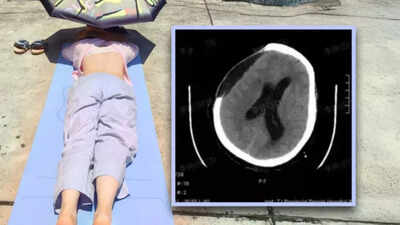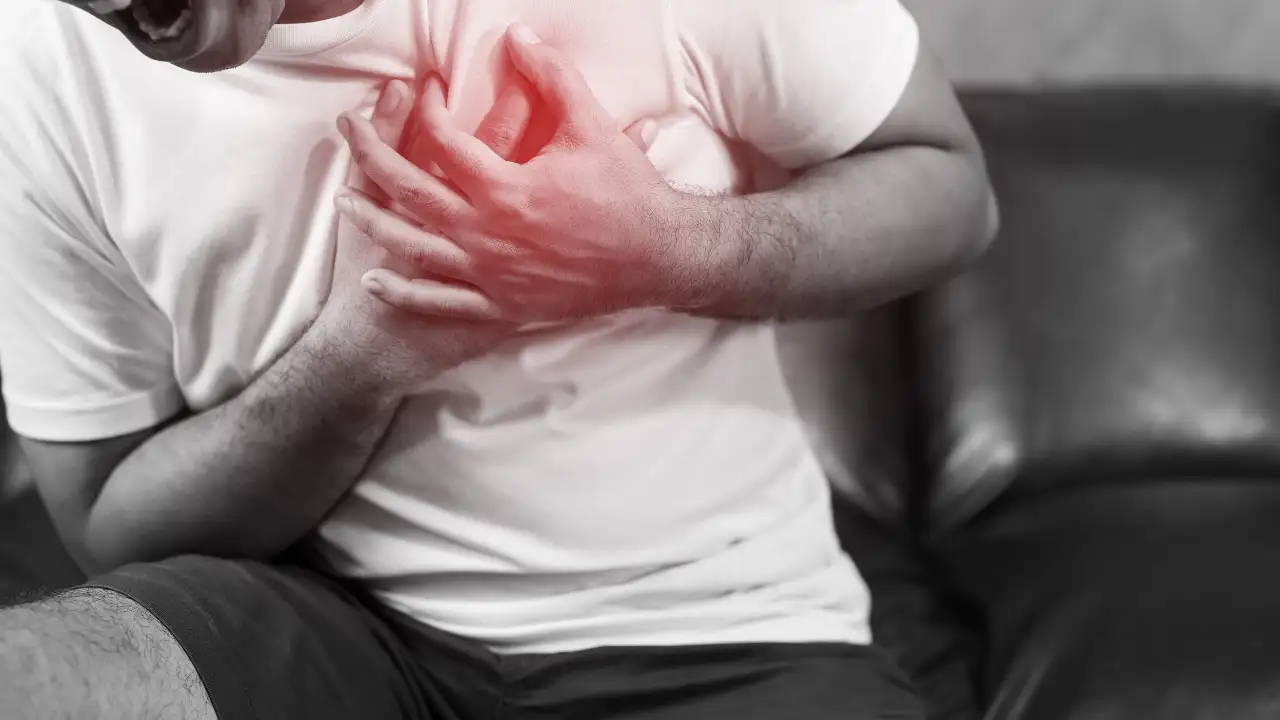
In a shocking case that has triggered widespread concern and debate across China, a 67-year-old woman from Zhejiang province slipped into a coma after sunbathing her back for two hours in intense summer heat.
Following a Traditional Chinese Medicine (TCM) belief that the practice could “warm yang energy and dispel dampness,” the woman—identified only by her surname, Wang—collapsed shortly after the self-treatment attempt. She was later diagnosed with a brain haemorrhage and brain hernia, requiring emergency surgery. The incident has reignited public conversations about unsafe traditional remedies, elderly heatstroke risk, and the deadly toll of extreme temperatures.
Woman in coma after attempting viral sunbathing trend
According to SCMP reports, Wang reportedly attempted the back-sunbathing ritual around noon, exposing herself to peak ultraviolet radiation and extreme heat. The method, which claims to balance internal energy or “yang qi” by soaking in sunlight, has been circulating in wellness circles online—despite no medical backing.According to experts, prolonged sun exposure without protection—especially during midday—can dangerously raise core body temperature, leading to complications like heatstroke, dehydration, and in Wang’s case, aneurysmal cerebral haemorrhage.
Moments after returning indoors, Wang lost consciousness and had to be rushed to the hospital. Doctors at Zhejiang Provincial People's Hospital confirmed that Wang had suffered severe brain trauma.
An immediate operation saved her life, but she remained comatose for a significant period.Ye Xiangming, Director of the hospital’s Rehabilitation Department, noted the complications of prolonged immobility, including muscle atrophy and organ stress.
Wang’s recovery involved multiple surgeries, acupuncture therapy, and months of rehabilitation. Eventually, she regained basic abilities such as sitting, talking, and eating—though full recovery remains uncertain.
Doctors urge caution as viral sunbathing trends endanger public health
Medical professionals strongly discouraged the uncritical adoption of traditional sunbathing remedies. “There is no scientific basis to the claim that sunbathing cures all diseases,” Dr. Ye stressed.Particularly for the elderly and those with hypertension or cardiovascular issues, extreme heat can be lethal. Zhuangshi Lihe, a Chinese medical influencer with over 2 million followers, echoed the warning: “People are romanticizing this nonsense. In high summer temperatures, even healthy individuals should focus on sun protection and heatstroke prevention.” A 2023 report by The Lancet estimated that heat-related deaths in China reached 50,900 in 2022, making climate-linked health emergencies a growing public health concern.
Wang’s case, which has gone viral on mainland social media, underscores the urgency of public education on safe health practices, especially among vulnerable age groups.

Social media reacts to sunbathing tragedy, urging common sense over viral trends
Social media users expressed both sympathy and frustration. One comment read: “She literally sunbathed with her life. Moderation is key.” Another remarked: “This is like a human barbecue. Even a healthy person would risk heatstroke—don’t blindly follow trends.”While Traditional Chinese Medicine has proven benefits in several areas, experts caution against applying ancient beliefs to modern extreme environments without scientific validation. As temperatures continue to climb globally, stories like Wang’s serve as a tragic reminder: health remedies should never come at the cost of safety.
Benefits and risks of sunbathing
While sunbathing can offer certain health benefits—especially for boosting vitamin D levels—it also comes with serious risks if not practiced with caution.
Here's a closer look at the pros and cons of sun exposure, how long you can safely sunbathe, and why moderation is key.

Sunbathing benefits
Natural Vitamin D productionSunlight triggers the skin to produce vitamin D, an essential nutrient that supports various bodily functions. Globally, over 1 billion people are estimated to be deficient in vitamin D, making sun exposure a valuable natural remedy.Hard to obtain from food aloneVitamin D is found in limited food sources like fatty fish and egg yolks, but most people rely on fortified foods such as milk or dietary supplements.
Sunlight offers a direct, cost-free alternative for improving vitamin D levels.Improved mood and reduced depressionSunlight stimulates the release of serotonin, a brain chemical linked to enhanced mood, calmness, and emotional stability. This can help alleviate symptoms of depression or improve general well-being.Better sleep cyclesExposure to sunlight helps regulate the circadian rhythm, your body’s internal clock. This natural rhythm makes it easier to fall asleep at night and wake up refreshed in the morning.Stronger bones and joint healthVitamin D promotes calcium absorption, which strengthens bones and may lower the risk of osteoporosis and arthritis, particularly in older adults.Enhanced immunityVitamin D plays a role in supporting the immune system, helping protect against heart disease, multiple sclerosis, the flu, and certain autoimmune conditions and cancers.Reduced risk of preterm laborFor pregnant women, sufficient vitamin D levels may help lower the chances of preterm delivery and infections during childbirth.Note: The American Academy of Dermatology advises against using sun exposure as your main source of vitamin D, recommending supplements and diet instead for safer intake.
Hidden dangers of excessive sunbathing
Sun rash and heat rashOverexposure to sunlight can lead to sun rash—an itchy, red irritation caused by blocked sweat glands, commonly referred to as heat rash.Painful sunburns and skin damageUnprotected sunbathing can result in sunburns, which cause pain, blistering, and long-term skin damage. Repeated sunburns are a major risk factor for melanoma, a serious form of skin cancer.Sun poisoning (PMLE)Some individuals develop polymorphic light eruption (PMLE) or sun poisoning, a condition that presents as red, itchy bumps typically on the chest, legs, or arms after intense UV exposure.
How long is it safe to sunbathe
According to Healthline reports, most dermatologists agree that 5 to 20 minutes of sun exposure per day—without sunscreen—can be safe for individuals without skin sensitivities. However, this depends on:
- Your skin type and sensitivity to sun
- Geographic location (proximity to the equator)
- Time of day (UV rays peak around noon)
- Air quality, which can influence UV exposure
Also Read | 5 coffee routine habits that could be doing more harm than good, say experts

 4 hours ago
1
4 hours ago
1






 English (US) ·
English (US) ·